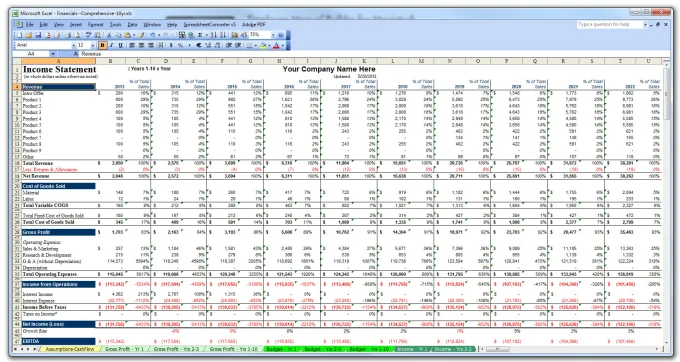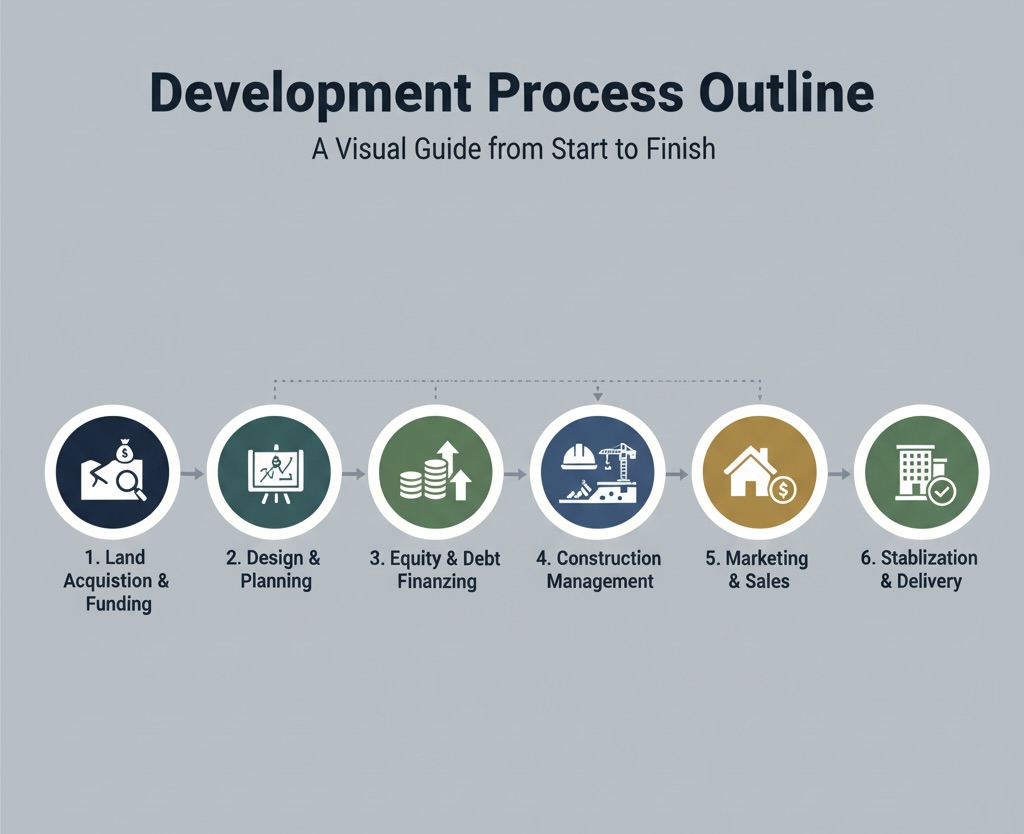Property owners ask how we partner on new developments. The structure varies, but we start by confirming the site pencils. When it does, we typically form a new JV LLC: the owner contributes the property at appraised value for equity; GIS invests its profits, aligning incentives from day one.
Here are the basic steps to develop a real estate project that we typically go through. Each one of these is probably worthy of its own book, but we will start with this summary.

- Cursory review.
Before we embark on a development journey together, we do a cursory review of your site and project potentials. Since we began working on projects nationwide, it became impractical to walk every job site in person. Here in the Greater Seattle area, you can count on us being there in person. But for the remote sites, internet and AI are our friends. We can learn a lot about a site by feeding the address in one of many commercially available AI models. We are constantly experimenting and switching between ChatGPT, Grok, Gemini and others. Many deals are killed here—for good reason.
- Feasibility study.
We start with a desk study: boundaries, topography, zoning/land-use, and critical areas using public maps and datasets. We request indicative bids for an ALTA/NSPS survey and a geotechnical investigation but hold off engaging them until a concept and go/no-go are clear. An architect prepares a quick test fit/massing to validate yield, circulation, and parking. We also pull a preliminary title report to surface easements, covenants, deed restrictions, and any red-flag encumbrances.
In parallel, we evaluate construction methods (site-built, panelized, modular, etc.) and ask a contractor or estimator for a rough-order-of-magnitude (ROM) cost. We run a rent survey or sales comps to ground revenue assumptions. Those inputs—program, ROM costs, and market data—flow into a working pro forma to test viability and sensitivity. If the desk study exposes specific risks (soils, utilities, access, wetlands, traffic, off-sites), we selectively bring in targeted third-party consultants to vet the issues before committing to full design. The deliverable is a clear go/no-go with key assumptions, major risks, and the path to entitlements and financing.
- Finance early-stage development work.
To fund the initial phases of development, our strategy is to capitalize the General Partner (GP) portion of the deal. This is accomplished through a specialized investment subset for our Limited Partners, often called a “GP fund.”
Investors in this GP fund are invited to co-invest alongside the sponsor, sharing in the heightened risks and corresponding returns of the GP position. While their liability is still limited to their invested capital, this vehicle gives them access to the sponsorship upside that comes with funding the more speculative, early-stage activities like design, permitting, and engineering.
Securing this initial capital is the crucial step that de-risks the project and positions it for its primary construction financing. Once preliminary milestones are met, we will raise the main construction equity from a broader base of Limited Partners and secure a traditional construction loan.
Fast cash option: As a simple, alternative method to quickly extract cash, we can facilitate a bridge loan for about 50% of the land’s valuation. This is offered as a tactical option, not a requirement.
- Design & Pre-Construction Management
The foundation of a successful project is a team of experienced professionals. We begin by engaging a core group of architects, design consultants, and engineers. Crucially, a general contractor is brought on early to provide cost estimations with each design iteration.
This collaborative process ensures financial discipline. As the design evolves, we continuously update the project proforma to verify that the project remains on track with its financial goals, while also accounting for any shifts in market conditions. Our firm leads this entire development cycle, managing the pre-construction efforts to meticulously forecast costs and prepare the project for a seamless transition to construction.
- Equity Syndication for Construction
In parallel with the design and permitting phase—a process that typically takes 12-18 months—we execute the equity syndication strategy. This involves creating the investment framework and marketing materials needed to bring capital partners into the project.
Our investor base typically includes high-net-worth individuals, family offices, and institutional equity investors. These partners are generally invited into the deal as Limited Partners (LPs), with a structure that includes:
-
-
- A passive role with no operational liabilities.
- A preferred return on their investment.
- A share of the project’s profits distributed through a waterfall structure.
-
- Securing Senior Construction Debt
Once a significant portion of the equity is committed, we engage our network of lenders to procure senior debt for construction. We have extensive experience with a variety of lending institutions, from commercial banks and insurance companies to debt funds and private lenders.
We carefully weigh the pros and cons of each—commercial banks offer lower costs but have longer approval processes, while private money is faster but more expensive. Our process involves preparing a comprehensive digital data room and a compelling pitch for a short list of trusted lenders before expanding the search with a broker if necessary.
- Construction & Project Oversight
The goal is to align the closing of the construction financing with the final approval of permits, allowing for an immediate groundbreaking.
Once construction begins, our dedicated construction team manages daily on-site operations. Simultaneously, our development arm maintains rigorous oversight of the project’s key metrics, including:
-
- Budget adherence and financial administration.
- Schedule management.
- Change order control and cost adjustments.
- Marketing, Leasing & Sales
To maximize value and reduce vacancy risk, marketing efforts begin long before the project is complete. A property management company or real estate brokerage is engaged to execute the marketing plan developed in the earlier stages.
-
- For-Sale Projects: Pre-sales campaigns typically launch up to one year prior to completion.
- For-Lease Projects: Pre-leasing efforts generally begin three to six months before the building is ready for occupancy.
- Stabilization & Project Delivery
The final phase often overlaps with the end of construction. As contractors complete the final items, we manage the initial occupancy and tenant move-ins. This stage concludes with the full stabilization of the asset and a smooth handover to the property management team for ongoing operations.
Real estate development is a complex and multi-stage process that requires careful planning, strategic partnerships, and precise execution. From the initial site walk to securing financing and managing construction, each step plays a crucial role in transforming a concept into a completed project. At GIS, we believe in a collaborative approach, ensuring that every project is structured for success from day one. Whether you’re a property owner exploring development opportunities or an investor looking for strategic partnerships, understanding these steps is the foundation for making informed decisions. If you’re ready to take the next step, let’s talk.

